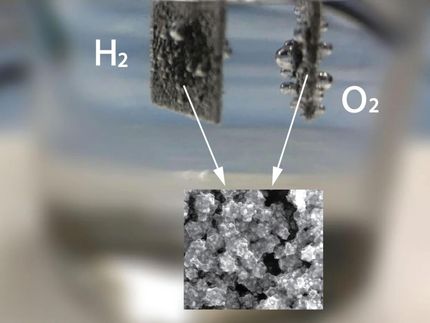A new fuel-cell concept for the catalytic production of hydrogen peroxide
08-Aug-2003
hydrogen peroxide is an important industrial reagent, which is used in
such processes as the environmentally friendly bleaching of paper and wastewater
treatment. Current industrial methods for the bulk production of H2O2 are
expensive, both in terms of energy and cost. A new method developed by Japanese
researchers could form the basis of a new, substantially more economical
process.
Ichiro Yamanaka's team has been working on the catalytic conversion of hydrogen
and oxygen into hydrogen peroxide. A mixture of hydrogen and oxygen is highly
explosive. Yamanaka and his co-workers thus chose a method that guarantees a
controlled reaction, even though the two volatile reactants never come into
direct contact: electrocatalytic conversion in a fuel cell. The special
advantage of this concept is that the energy released in the reaction can be
captured in the form of an electric current. The researchers have now further
improved their original fuel cell concept.
The secret of their success is a three-phase interface within the cathode, the
negative electrode. Rather than introducing oxygen in an electrolyte solution,
as was done previously, a stream of oxygen gas is introduced directly onto the
solid, but porous, cathode. The other side of the cathode contains a dilute
sodium hydroxide solution as an electrolyte, which also enters the pores. This
allows for higher oxygen concentration on the inner electrode surface, allowing
in turn for a higher conversion. Hydrogen gas is directed in a similar way onto
the equally porous anode.
A further crucial improvement lies in the enclosure of the electrolyte solution
within cathode and anode areas by a semipermeable membrane. This solves another
problem that plagued the previous version of the fuel cell; the hydrogen
peroxide formed at the cathode no longer has access to the anode, where it would
decompose to form water. Last but not least, the efficacy of the catalytic
graphite electrodes was increased by the inclusion of various additives.
Even when air is used in place of pure -- expensive -- oxygen, the output of the
fuel cell is high enough. This renders the concept an economically interesting
alternative for the bulk production of hydrogen peroxide.
Most read news
Other news from the department science

Get the chemical industry in your inbox
From now on, don't miss a thing: Our newsletter for the chemical industry, analytics, lab technology and process engineering brings you up to date every Tuesday and Thursday. The latest industry news, product highlights and innovations - compact and easy to understand in your inbox. Researched by us so you don't have to.




























































